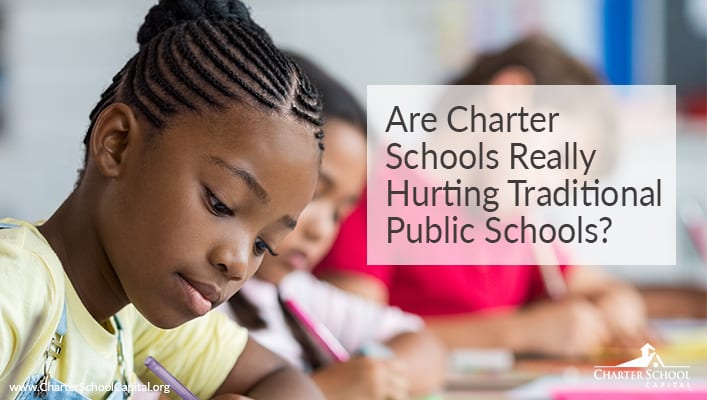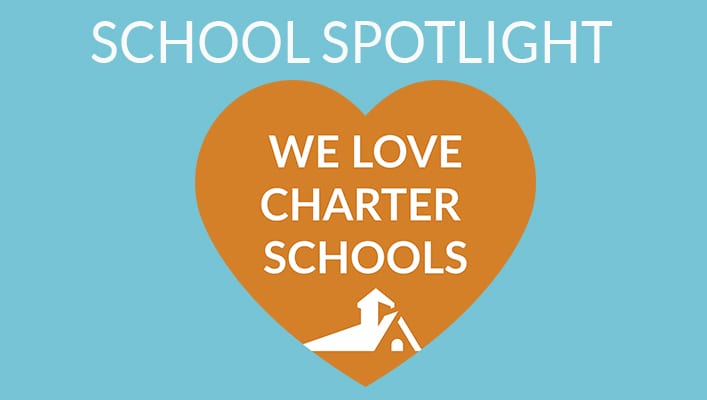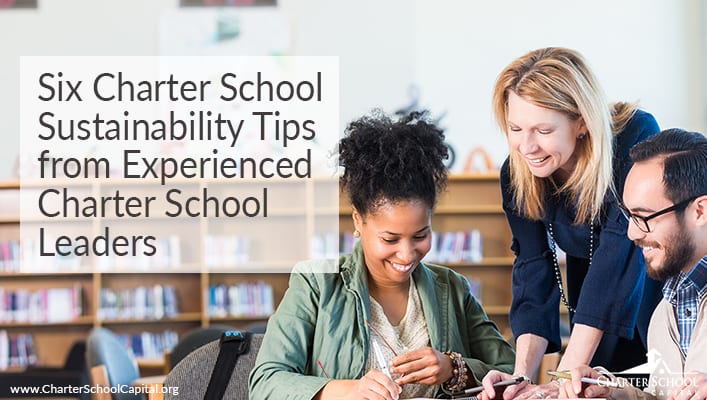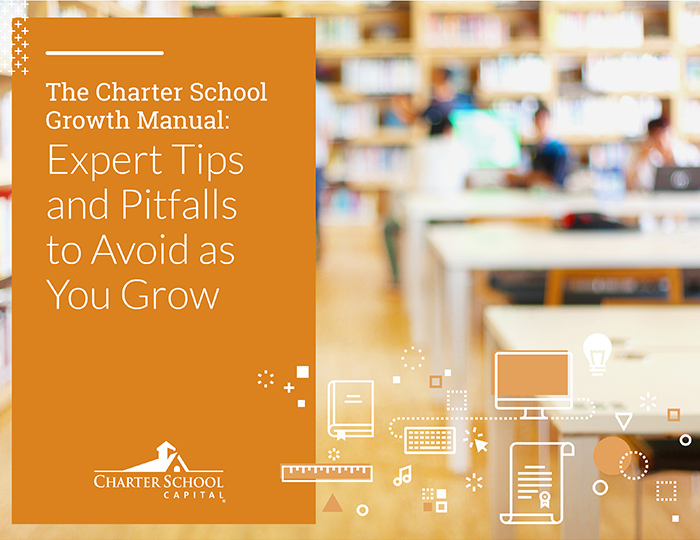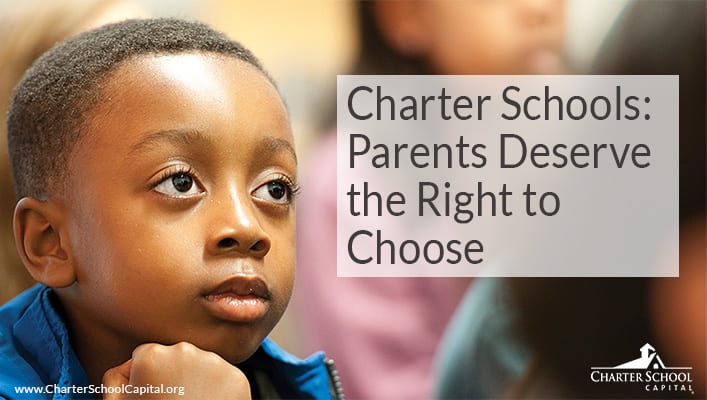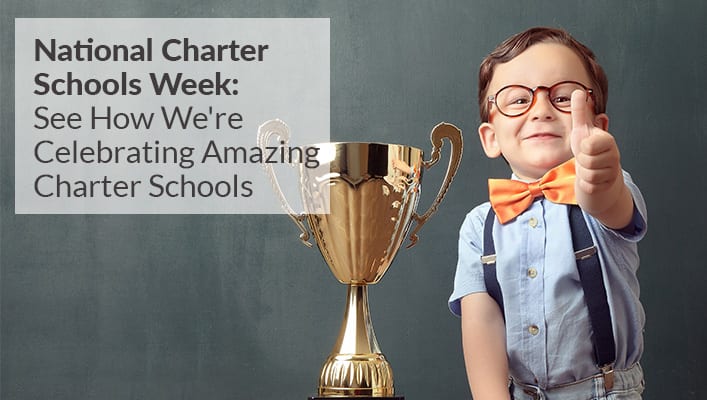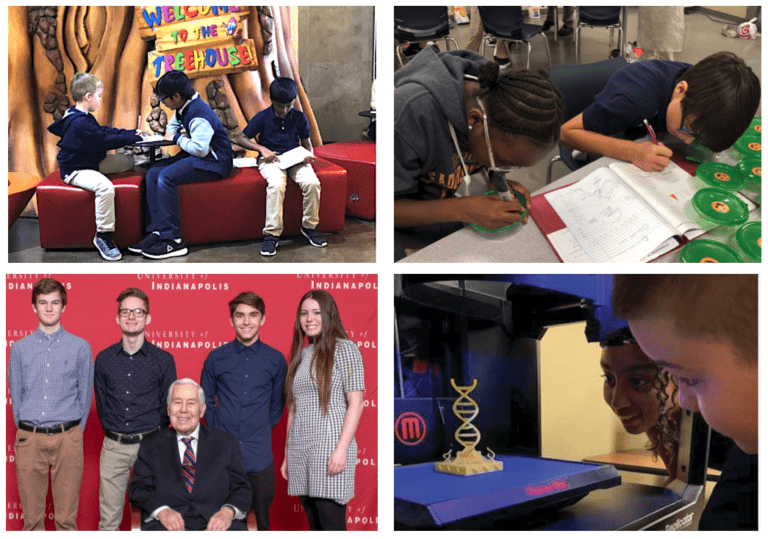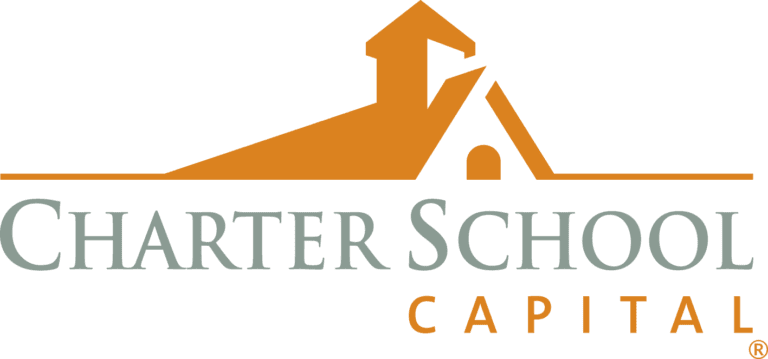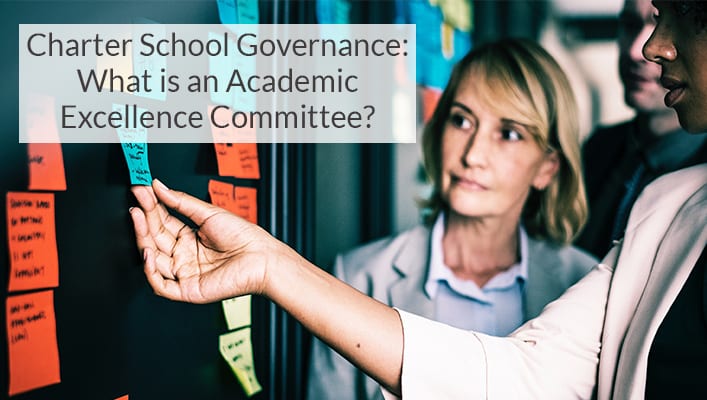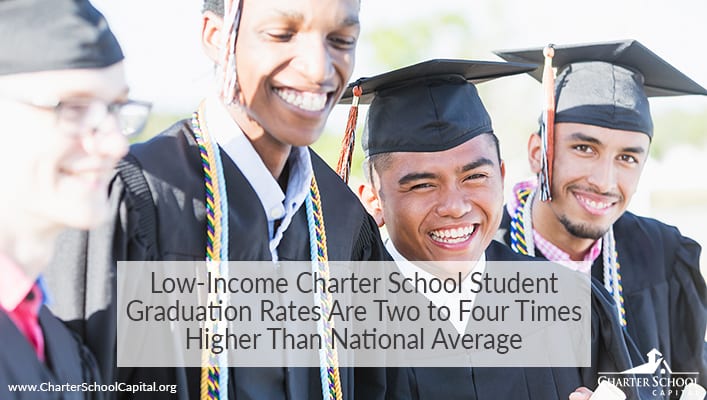
Editor’s Note: This post was originally published here on March 26, 2019, by The 74 and written by Richard Whitmire. Whitmire is author of several books, most recently “The B.A. Breakthrough: How “Ending Diploma Disparities Can Change the Face of America.” Whitmire is a member of the Journalism Advisory Board of The 74.
We are always thrilled to highlight the exceptional work that charter schools are doing, and this story exemplifies the opportunities that charter schools are creating, especially for low-income students across our country. This report specifically looks at college success records at the major charter networks serving low-income students.
We think it’s vital to keep tabs on the pulse of all things related to charter schools, including informational resources, and how to support school choice, charter school growth, and the advancement of the charter school movement as a whole. We hope you find this—and any other article we curate—both interesting and valuable
New Numbers Show Low-Income Students at Most of America’s Largest Charter School Networks Graduating College at Two to Four Times the National Average
By Richard Whitmire
A fresh look at the college success records at the major charter networks serving low-income students shows alumni earning bachelor’s degrees at rates up to four times as high as the 11 percent rate expected for that student population.
The ability of the high-performing networks to make good on the promise their founders made to struggling parents years ago — Send us your kids and we will get them to and through college — was something I first reported on two years ago in The Alumni.
Writing the new book I’m about to publish with The 74, The B.A. Breakthrough: How Ending the Diploma Disparity Can Change the Face of America, provided the chance to go back and revisit those results. (You can track B.A. Breakthrough updates here.)
The baseline comparison number is slightly different but still dismal — just 11 percent of low-income students will graduate from college within six years — while for the big, nonprofit charter networks that serve high-poverty, minority students, most of them in major cities, the rates range from somewhat better to four times better and, in some cases, even higher.
The improved chances of earning a degree held while the ranks of charter alumni grew and the data became more robust. In some cases, the numbers are getting stronger and at least one prominent network, Uncommon Schools, predicts its graduates will close the college completion gap with affluent students in the next several years and surpass it a few years after that.
“Our mission is to get students to graduate from college, and that has influenced everything we do while we have students in elementary, middle and high school,” said Uncommon CEO Brett Peiser. “We’ve learned a lot about what works in helping students succeed in college, and everyone is focused on that goal.”
Ever since the first charter school was launched in Minnesota 27 years ago, educators watching the experiment have asked the same question: What lessons do they offer traditional school districts? Now, we may have that answer: Greatly improved odds that their alumni will earn college degrees.
Assuming that the charter completion rates persist, there’s a reasonable chance that their lessons learned could transform the way traditional school districts see their obligations to their graduates: How do they fare in college, and what effective methods from the charters could they start adopting to improve their outcomes later in life? Currently, almost no traditional districts track their alumni through college, although those in New York, Miami and Newark are moving in that direction.
All these issues get laid out in The B.A. Breakthrough. The book’s theme: The college success strategies pioneered by these charter networks are combining with entrepreneurial programs to spread data-driven college advising to high school students who lack it and with a growing commitment from colleges and universities to embrace low-income, first-generation students and ensure they walk away with degrees despite their vulnerabilities. Together these efforts add up to a breakthrough.
The charter network leg of the breakthrough
Given that college success is measured at the six-year mark, only recently has it become possible to evaluate the charter networks. In 2017, The 74 published a first-ever look at those rates as part of its series, The Alumni.
As with that project, the 11 percent college success rate used for comparison comes from The Pell Institute. That statistic provides an imprecise measurement, however, because it doesn’t take into account that most of these charter students are not just low-income, but also minority students living in urban neighborhoods whose college completion odds are even more daunting.
Comparing college graduation rates across charter networks is not easily done. KIPP, for example, tracks all alumni who completed eighth grade with KIPP, regardless of whether they go on to a KIPP high school. That puts KIPP in a category by itself. The other networks use the traditional approach of tracking only their high school graduates.
Even among the charter networks that track their high schoolers from graduation day, there are significant variations. While all the networks draw on the same foundational source, the National Student Clearinghouse, which matches the IDs of high school graduates to enrolled college students, some networks invest in their own tracking system, which picks up students missed by the Clearinghouse system. That makes their data more accurate and likely to produce higher rates.
Given the complexities, I divide the charter data into three groups:
Category 1 — Tracking from eighth grade, record-keeping that KIPP says is necessary to account for dropouts:
KIPP (national): As of the fall of 2017, KIPP had 3,200 alumni who were six years out of high school. The network’s national college completion rate is 36 percent for all alumni who completed eighth grade at a KIPP school and 45 percent for those who graduated from a KIPP high school. That counts students who entered a KIPP high school in ninth grade and stayed a year or more. In the national group, another 5 percent earned two-year degrees; in the group that graduated from a KIPP high school, another 6 percent earned two-year degrees.
Category 2 — Networks that use both Clearinghouse and internal tracking data:
Uplift Education (North Texas): Thirty-seven percent of the 1,075 graduates of the classes of 2011, 2012, 2013 and 2014 earned bachelor’s degrees within six years. When associate’s degrees are included, that climbs to 40 percent. If calculated just on the classes of 2011 and 2012, the rate would be 57 percent.
Uncommon Schools (New Jersey and New York): Fifty-four percent of their alumni earn a bachelor’s degree within six years. Among those, 39 percent earn a bachelor’s within four years. Drawing on data that track students currently enrolled, Uncommon predicts that it will close the college graduation gap with high-income students (58 percent) in the next few years. Within six years, Uncommon expects to hit a success rate of 70 percent.
DSST Public Schools (Denver): Among the 1,075 alumni, starting with the class of 2011, half earned bachelor’s degrees within six years.
YES Prep (Houston): The network has 974 alumni from the graduating classes of 2001-2012. Among the earliest graduating classes (2001-2008), 52 percent earned a two- or four-year degree within six years of high school graduation. Of the most recent graduating classes (2009-2012), 40 percent earned a four-year degree and 6 percent earned a two-year degree within six years of high school graduation.
Noble Network of Charter Schools (Chicago): Noble has 2,259 alumni who are six years or more out of high school. Among that group, 35 percent have bachelor’s degrees, 7 percent have associate’s degrees and 9 percent are still in college.
Category 3 — Charter networks that rely solely on National Student Clearinghouse data:
Achievement First (New York, Connecticut and Rhode Island): There were 74 alumni from the classes of 2010-12. Of those, 34 percent earned bachelor’s degrees within six years. Another 2 percent earned associate’s degrees.
Green Dot Public Schools (California): Green Dot has 6,601 alumni from the classes of 2004-2012. Of those, 14 percent earned bachelor’s degrees by the six-year mark. Another 15 percent completed two-year degrees. (Green Dot has a less aggressive college success program than other networks, and, as seen in its absorption of the failing Locke High School in Watts, it takes on significant challenges.)
Aspire Public Schools (California and Tennessee): Aspire has 619 alumni from the classes of 2007-2012 who have reached the six-year point. Of those, 26 percent earned bachelor’s degrees, a rate that rises to 36 percent when associate’s degrees and certificates are included.
Alliance College-Ready Public Schools (California): At Alliance, 610 of their 2,617 alumni have reached the six-year point. Of those, 23 percent have earned four-year degrees. When two-year degrees are added in, the percentage rises to 27.
IDEA Public Schools (Texas, Louisiana): At IDEA, 508 alumni have reached the six-year mark. Of those, 38 percent earned bachelor’s degrees. Another 4 percent earned associate’s degrees in that time. (Another 2 percent earned either a bachelor’s degree or an associate’s, but it’s unclear which, due to reporting issues.) The network says it is experiencing steady improvements: Whereas only 31 percent of 2009 IDEA graduates completed college in six years, 50 percent of its 2012 graduates did.
Single charter schools:
There are a few solo charters, not part of networks, with significant numbers of alumni who have passed the six-year mark.
One example from Boston, a city which has some of the longest-running charters, is Boston Collegiate Charter School. There, 51 percent of the 177 alumni six years out earned bachelor’s degrees; another 8 percent earned two-year degrees. The school appears to be experiencing sharp increases in success rates: For the class of 2014, 79 percent graduated from college within four years.
More on the data
Consider this an early take on the promise charters made to offer better odds on college success. For many of the networks, the number of alumni who have reached the six-year mark is modest. We’ll know more as larger classes graduate and reach that milestone.
Comparing the networks is difficult because some use internal tracking systems that pick up students missed by the Clearinghouse. For example, networks using only Clearinghouse data miss students exercising their privacy rights, known as “FERPA blocks” for the Family Educational Rights and Privacy Act. That shields their college transcripts from outside review. In a time when immigration issues are contentious and parents (and some students) could face deportation, FERPA blocks are an attractive option for families. The number of blocks varies greatly by region, with few on the East Coast exercising the option and as high as 6 percent of all students attending West Coast colleges opting to shield their records, according to the Clearinghouse.
Translation: Charter networks such as IDEA Public Schools, with many of its schools located in Texas border towns, that also rely only the Clearinghouse data, are likely to show lower success rates.
Also tricky: When comparing the charter alumni to the broader student population, what’s the right comparison number to choose? The 11 percent Pell number I’m using should be viewed as a rough marker. First, that makes the denominator all low-income students — not just low-income high school graduates — which suggests the 11 percent figure is low. But the fact that most of these networks enroll minority students from urban neighborhoods suggests 11 percent is high because the Pell number would include low-income Asian and white students, who across income levels have higher college graduation rates than black and Hispanic students. Bottom line: The 11 percent emerges as a useful if imprecise comparison figure.
Watching a network do the math
By necessity, all the college graduation data are self-reported. Outcome figures from the National Student Clearinghouse, which is private, are proprietary to the networks, which pay the Clearinghouse for the information. For the sake of transparency, I asked one network, Uncommon Schools, to open up its books for me so I could observe both processes, the Clearinghouse data combined with its own tracking data.
In April 2018, I met Ken Herrera, Uncommon’s senior director of data analytics, in Newark at North Star Academy Charter School. There, Herrera clicked on his laptop and showed me a listing of alumni. For privacy reasons, the students had been “de-identified” and showed up only as numbers on the modified Salesforce (the customized business software Uncommon and other networks use to track their alumni) program. Twice a year, said Herrera, usually in March and October, Uncommon sends a list of alumni names and their dates of birth to the Clearinghouse for tracking. Why just some? Because Uncommon saves money by omitting names of alumni who, for example, already had their college graduation confirmed through a university. In about two weeks, the Clearinghouse sends back an Excel sheet with the information it collected on the asked-about students: where they are in school and what term — fall semester, for example — they are in.
If Herrera sees a “no match,” which happens about 10 percent of the time, he and the counselors investigate. At networks that don’t track alumni individually, that student would be counted as a dropout. When digging into it further, Uncommon finds out whether they truly have dropped out by contacting the university or the family or the student, whatever means is available. They also track down whether it’s just a matter of having entered the wrong birth date or a name mix-up, such as a nickname used when enrolling in college. If it is just a bookkeeping issue, the counselors request a copy of the college transcript so the error can get fixed.
Another reason for the “no match” might be the FERPA block, which prompts the Uncommon team to contact the students and convince them to unblock their records. Some universities make records disclosure an opt-in process, done every semester, which makes life especially difficult for Herrera, because if the student fails to take action the default status is a FERPA block.
In early April each year, Herrera meets with the counseling team to sort out data omissions, a painstaking, student-by-student process. “We’ll say, ‘This is what the Clearinghouse says about the student, here’s what Salesforce says about the student. What are we going to do about this conflict?’” That leads to a counselor personally investigating: Where is the student? When all the data issues get settled, Uncommon can calculate its college success figure.
Now the trickier issue: Unlike most other networks, Uncommon predicts where its college success rate is headed. Here’s what Uncommon predicts, as noted above: In roughly six years, the college success rate will rise to about 70 percent. Given that 70 percent exceeds the rate for well-off white students, that’s a remarkable prediction. What’s it based on? Uncommon tracks its alumni by cohorts, so it can establish a historical rate for, let’s say, how many students drop out between their freshman and sophomore year in college.
“When we look at each of those [dropout points] we can predict where an individual cohort is going, based on those historical rates, and predict what we think their graduation rate is going to be,” Herrera said.
Currently, Uncommon is seeing significant improvements, such as half the historical rate of dropouts between the sophomore and junior years. Also an issue: Uncommon is growing. By the year 2022, it projects 1,000 graduates a year, compared with the roughly 400 current graduates. That also figures into the math, because younger cohorts, which are showing better persistence rates, have a bigger impact on the overall college success math. The newer cohort, for example, is showing a 50 percent success rate at the four-year mark (older cohorts achieved that only at the six-year mark). Thus the prediction: 70 percent overall success rate within six years.
So why the improved persistence? Most of that, says Herrera, comes from strengthening the high school curriculum and programs such as Target 3.0, a mandatory class to boost the grade point averages for all students with a GPA less than 2.5.
“What we found, perhaps unsurprisingly to many people, but I think really profoundly for us, was that students with higher GPAs were more likely to graduate from college,” he said. “When we cut the data, getting above a 3.0 GPA [in high school] was very significantly correlated with future college success.”
Where all this leads
Yes, it is early to be judging college success among these networks, but not premature. There are thousands of alumni in these calculations, and their academic outcomes are crucial. If their success persists and, more importantly, if their lessons learned are picked up by the far larger traditional school districts, we could be looking at one of the most successful anti-poverty programs ever seen in this country.
There’s no guarantee it will happen, but the seeds are there, all explained in the upcoming The B.A. Breakthrough.
 Since the company’s inception in 2007, Charter School Capital has been committed to the success of charter schools. We help schools access, leverage, and sustain the resources charter schools need to thrive, allowing them to focus on what matters most – educating students. Our depth of experience working with charter school leaders and our knowledge of how to address charter school financial and operational needs have allowed us to provide over $1.8 billion in support of 600 charter schools that have educated over 1,027,000 students across the country. For more information on how we can support your charter school, contact us. We’d love to work with you!
Since the company’s inception in 2007, Charter School Capital has been committed to the success of charter schools. We help schools access, leverage, and sustain the resources charter schools need to thrive, allowing them to focus on what matters most – educating students. Our depth of experience working with charter school leaders and our knowledge of how to address charter school financial and operational needs have allowed us to provide over $1.8 billion in support of 600 charter schools that have educated over 1,027,000 students across the country. For more information on how we can support your charter school, contact us. We’d love to work with you!
 Charter School Legislation: California Bills Dead for the Year
Charter School Legislation: California Bills Dead for the Year Since the company’s inception in 2007, Charter School Capital has been committed to the success of charter schools. We help schools access, leverage, and sustain the resources charter schools need to thrive, allowing them to focus on what matters most – educating students. Our depth of experience working with charter school leaders and our knowledge of how to address charter school financial and operational needs have allowed us to provide over $1.8 billion in support of 600 charter schools that have educated over 1,027,000 students across the country. For more information on how we can support your charter school, contact us. We’d love to work with you!
Since the company’s inception in 2007, Charter School Capital has been committed to the success of charter schools. We help schools access, leverage, and sustain the resources charter schools need to thrive, allowing them to focus on what matters most – educating students. Our depth of experience working with charter school leaders and our knowledge of how to address charter school financial and operational needs have allowed us to provide over $1.8 billion in support of 600 charter schools that have educated over 1,027,000 students across the country. For more information on how we can support your charter school, contact us. We’d love to work with you!
